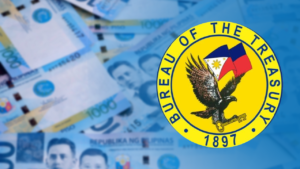The Philippines’ dollar buffers declined in December due to outflows stemming from the Bangko Sentral ng Pilipinas’ (BSP) efforts to prop up a weak peso and withdrawals of the government to settle its foreign obligations, putting the year-end level below the official estimate.
The country’s gross international reserves (GIR) amounted to $106.84 billion as of end-December, lower than the preceding month’s level of $108.49 billion, preliminary data released by the BSP on Tuesday showed.
That means the GIR at the end of 2024 fell short of the upwardly revised projection of the BSP for last year, which was set at $109 billion.
READ: Foreign debt payments, peso defense pulled down GIR in Nov
The GIR serves as the country’s buffer against external shocks.
The reserve assets consist of foreign investments of the central bank, gold and foreign exchange as well as borrowing authority with the International Monetary Fund (IMF) and the country’s contributions to the same Washington-based institution.
The BSP attributed the decline to its “net foreign exchange operations”. Simply put, the central bank dipped into the dollar reserves to smooth out any peso volatility that can stoke imported inflation.
The BSP also said the government took out some cash from its deposits with the central bank to settle its offshore debts, contributing to the outflows last month.
Figures showed the foreign exchange holdings of the BSP sagged by 21 percent month-on-month in December to $1.4 billion, the biggest decline among the GIR components.
Gold prices
The GIR also fell due to a decline in prices of gold in the international market which, in turn, lowered the value of the BSP’s holdings of the precious metal. According to data, the gold component of the GIR inched down by 0.2 percent to $11 billion.
Elsewhere, foreign investments of the BSP, which accounted for the bulk of the GIR, fell by 1.4 percent month-on-month to $90 billion. The country’s reserve position in the IMF increased by 1.1 percent to $676 million while its special drawing rights with the Washington-based lender was unchanged at $3.76 billion.
Despite the lower-than-expected results, the BSP said the latest GIR level can cover 7.5 months’ worth of imports. It is also about 3.8 times the country’s short-term external debt based on residual maturity.
By convention, GIR is viewed to be adequate if it can finance at least three months’ worth of the country’s imports of goods and payments of services and primary income.
The reserves are also considered adequate if they provide at least 100 percent cover for the payment of the country’s foreign liabilities—both from the public and private sectors—falling due within the immediate twelve-month period. —Ian Nicolas P. Cigaral


